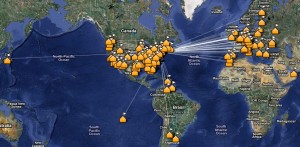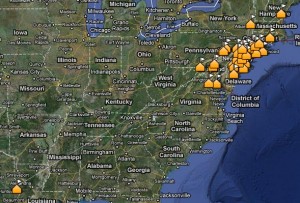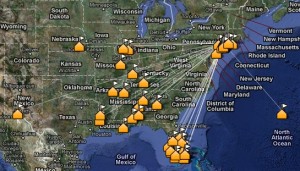Saturday was the 2010 July NAQP RTTY contest where a single op can operate 10 of the 12 hours. I picked the first 10 hours so I operated local time 2pm to midnight. I started out on 20m calling CQ for the first hour and did ok. I then switched to S&P for 1 hour going up/down 20m getting all the other CQ’ers as well as checking 15m and 10m. 10m was completely dead and 15m wasn’t much better. I made a total of 6 contacts on 15m and they were all in that second hour of the contest. Whenever I switched back to check a quick listen, I heard nothing. I even called CQ a bit later and not 1 station responded.
I stayed on 20m switching between CQing and S&Ping when CQing responses dropped off. As the sun started to set I switched to 40m and worked stations there and called CQ a bit switching back to 20m to catch anyone new. I wasn’t seeing the action on 40m that I saw in last years contest where I logged 20% more 40m contacts then 20m contacts. I need 40m and 80m to work the closer states and to give the state multipliers for the other bands, but that wasn’t working out well tonight.
I switched to 80m and it was solid noise. Not wall to wall ham radio operators but loud S7-S9 noise. What the heck is going on? I thought it might be something at my location, but a ham about 7-8 miles away said the exact same thing. 80m was completely unusable except for the strongest stations. I was hoping the conditions would improve, but every time I switched back, it was still bad. I switched back to 20m late in the contest to see if I could find a Hawaii station or one from NE, SD or UT but no such luck.
Last year I had 210 contacts and 77 mults on 40m & 80m. This year the conditions were rough and I only was able to manage 133 Q’s and 51 mults on 40m & 80m. I ended up with 14 more total Q’s this year but with the conditions/activity on 40m and 80m I was down a combined total of 14 multipliers so my total score was less. If 80m was usable I would have likely blown past last years effort. Logs have been uploaded to eQSL, LoTW and sent in to the contest sponsor. Here’s hoping for less noise and more Q’s in the upcoming contests.
Score summary:
Band QSOs Pts Sec NA 3.5 27 27 15 0 7 106 106 36 0 14 198 198 43 2 21 6 6 6 0 Total 337 337 100 2
Score : 34,374
73,
K2DSL




